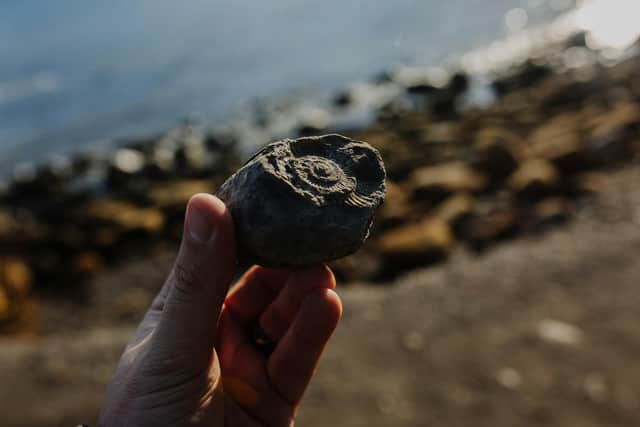Great places to go fossil hunting in Northern Ireland
and live on Freeview channel 276
In the late Triassic Period some 200 million years ago, Ireland, as part of the supercontinent Pangea, was on the same latitude as the present-day Sahara Desert and covered by a shallow sea, which provided perfect conditions for marine life to fossilise.
One of the most popular sites for fossil searching is Waterloo Bay in Larne.
Advertisement
Advertisement
To the casual eye, it may not be much to look at - a bleak stretch of flat rocks constantly battered by the tides - but just north of Larne town centre lies the most accessible location on the island of Ireland for fossil hunting and geological interest.


Waterloo Bay contains the remains of tiny marine fossils dating back at least 200 million years, ranging from familiar ammonites to the prehistoric oyster Gryphaea (also known as ‘devil’s oysters’) and even huge marine reptiles - ichthyosaurs and plesiosaurs.
One of the most complete ichthyosaurs in the British Isles was found here in 1999, with the skeleton of the ‘Larne Sea Dragon’ now being displayed in Belfast’s Ulster Museum.
In many ways, it is Ireland’s equivalent of the famous ‘Jurassic Coast’ found in East Devon and West Dorset on England’s south coast. If possible, be sure to visit at low tide when you can clearly see the progression of the foreshore rocks through the millenia.
Advertisement
Advertisement
Another great location for seeing if you can find fossils from time gone by is in White Park Bay, just 10 kilometres northwest of Ballycastle.
Here successive rock layers can yield Mesozoic Era specimens such as ammonites, belemnites and Gryphaea.
While the cliffs and platforms are strictly protected, many loose blocks containing some washed-out fossils can easily be found through walking on the beach.
When emerging from the footpath, you will see Cretaceous Period chalk cliffs and wave-cut platforms, with rocks and boulders on the beach to your left.
Advertisement
Advertisement
However, turn east towards Oweynamuck to find exposures of the Lower Jurassic Liassic Waterloo Mudstone Formation.
Although much of the Lias is overlain by Cretaceous landslips and wind-blown sand, it can be found in scouring conditions in the toes of landslips and at low tide, especially in a waterfall section west of the School and at Oweynamuck.
Halfway along the beach, at the foot of the chalk boulder field, exposures can be found at low tide in the right conditions.
Other areas around Northern Ireland that are rich in fossilised rock include:
Portrush
Advertisement
Advertisement
Known for its beautiful beaches, Portrush is also a site of geological interest.
The area around White Rocks Beach and Dunluce Castle offers opportunities to find fossils, especially plant fossils and traces of ancient marine life.
The limestone cliffs in this region are particularly rich in fossilised sea creatures.
Antrim Coast
Stretching along the northeastern coast of Northern Ireland, this area is known for its basalt columns at the Giant's Causeway.
Advertisement
Advertisement
While the Causeway itself is not a fossil-hunting site, the surrounding areas, particularly along the coast near Cushendun and Cushendall, may yield interesting finds.
The cliffs and rock formations along this coast are made of layers of sedimentary rock that could contain fossils.
Strangford Lough
This area, particularly around the Ards Peninsula, offers a diverse range of geological features.
The rocky shores and exposed cliff faces could be promising for fossil enthusiasts, especially those interested in marine fossils.
Murlough Bay
Advertisement
Advertisement
Located near Ballycastle, Murlough Bay offers a rugged coastline where fossil hunters can search among the rocks and cliffs.
The area is known for its natural beauty, and the rock formations here are part of the same geological structures that run through much of the Antrim coast.